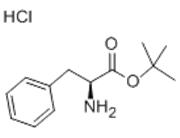Biochemical Research and Drug Discovery: H-D-Phe-OtBu·HCl, as a derivative of D-phenylalanine, can be a valuable tool in biochemical research. Its unique structure allows scientists to investigate the role and interaction of D-phenylalanine in biological systems. Furthermore, it may exhibit therapeutic potential in drug discovery efforts, targeting specific biological processes or diseases.
Peptide Synthesis and Protein Engineering: H-D-Phe-OtBu·HCl serves as a crucial building block in peptide synthesis. It enables researchers to construct peptides and proteins with tailored properties, essential for protein engineering applications. By incorporating D-phenylalanine into peptides, researchers can modify their structure and function, leading to enhanced stability, activity, or binding affinity.
Chirality Studies: The presence of D-phenylalanine in H-D-Phe-OtBu·HCl allows for the investigation of chirality in biological systems. Chirality, or handedness, plays a crucial role in many biological processes, and studying the effects of D-amino acids can provide insights into their role in cellular function and disease.
Material Science and Organic Synthesis: The chemical properties of H-D-Phe-OtBu·HCl may also find applications in material science and organic synthesis. Its reactive groups can be utilized to prepare complex organic molecules with unique properties, potentially leading to the development of novel materials with enhanced functionalities. | 

 China
China

